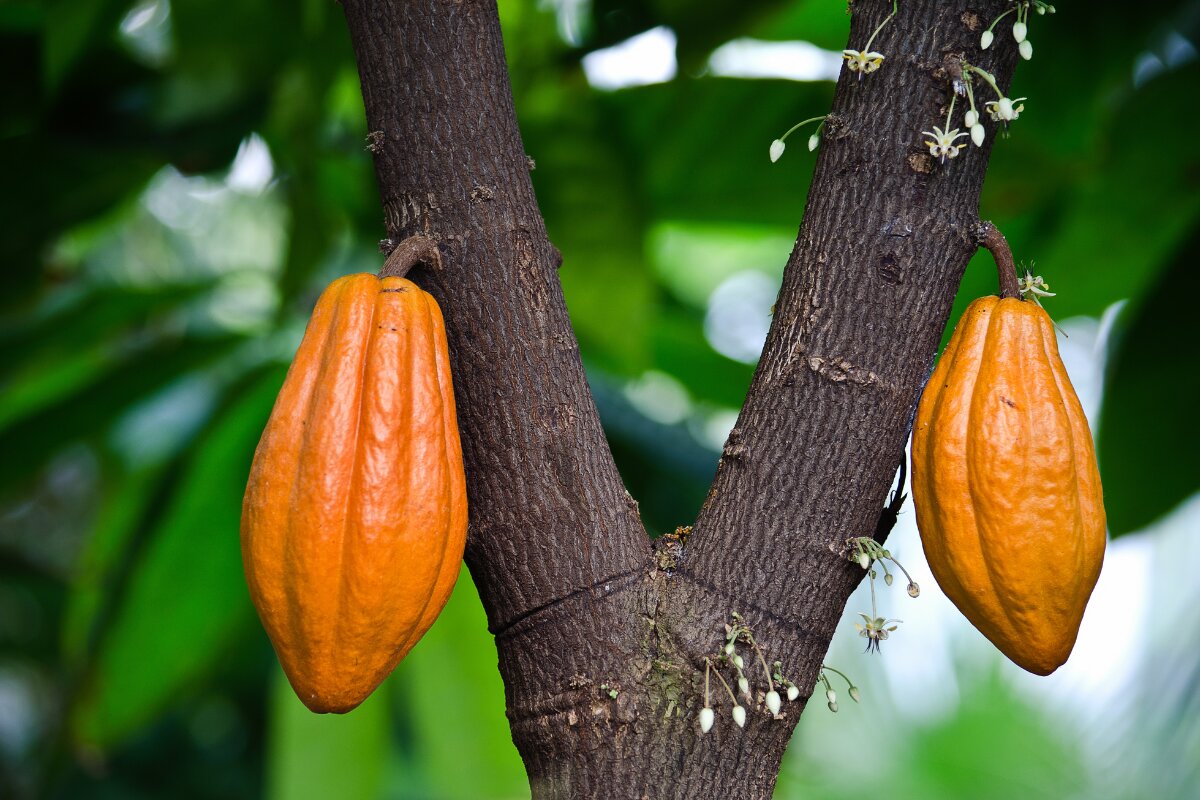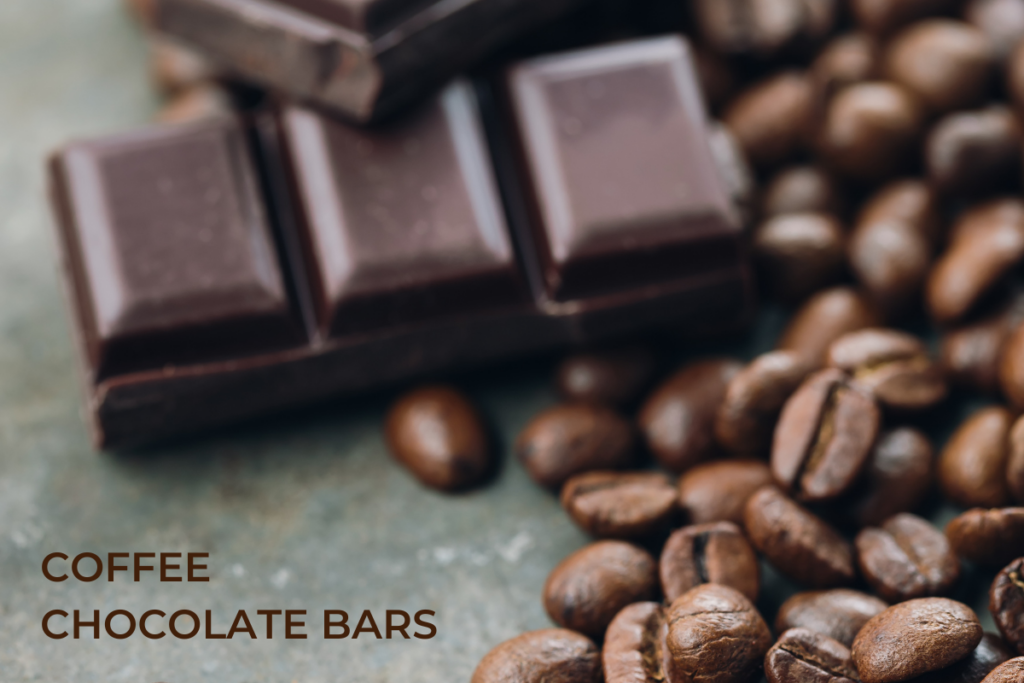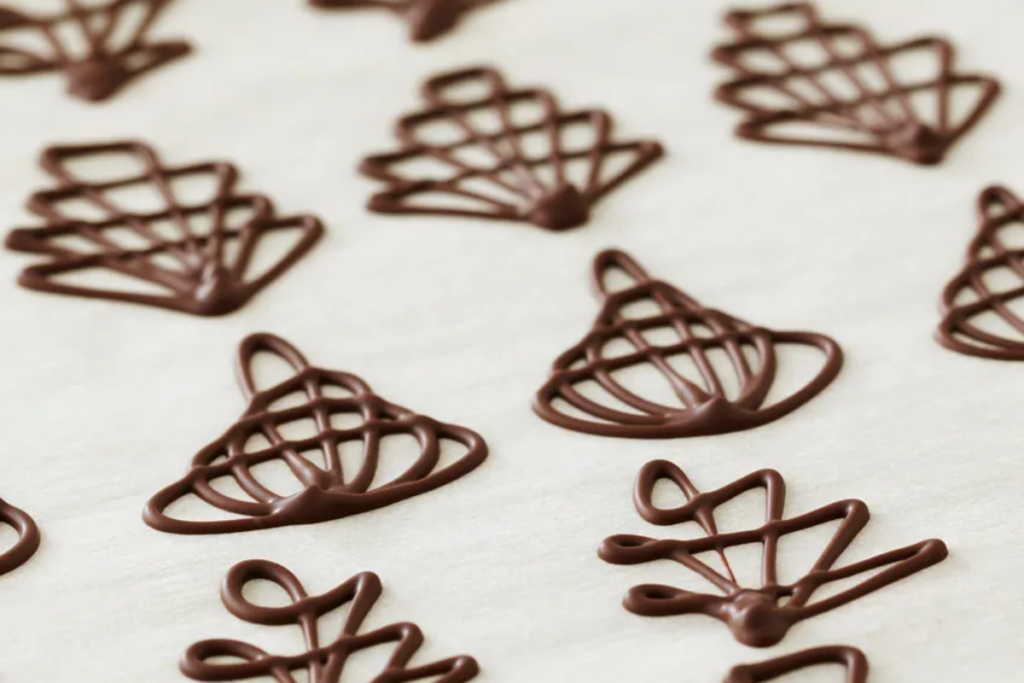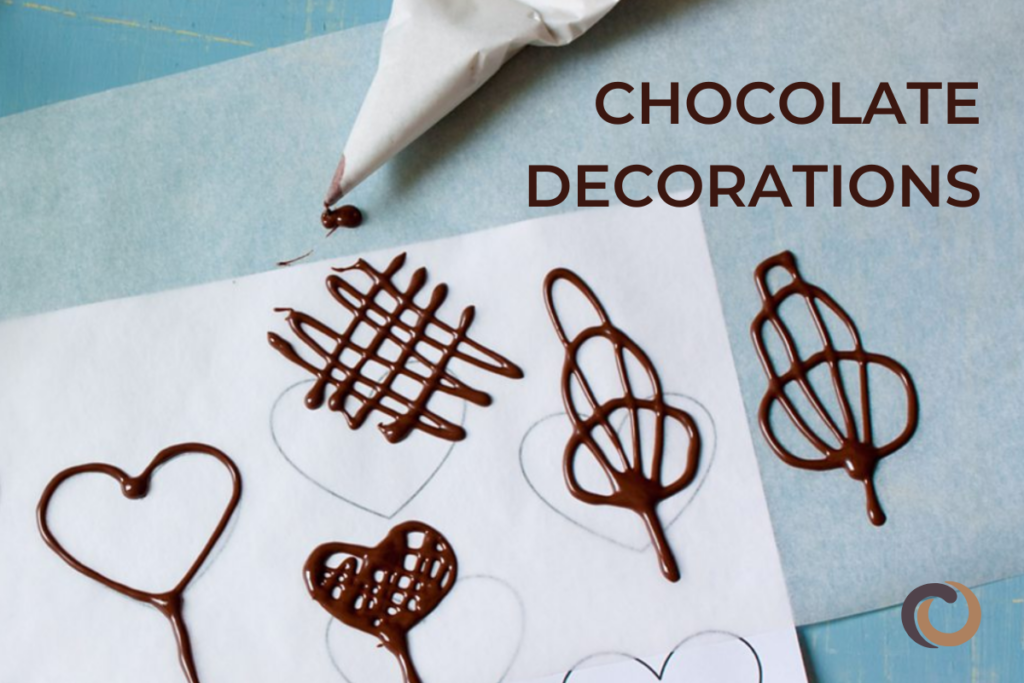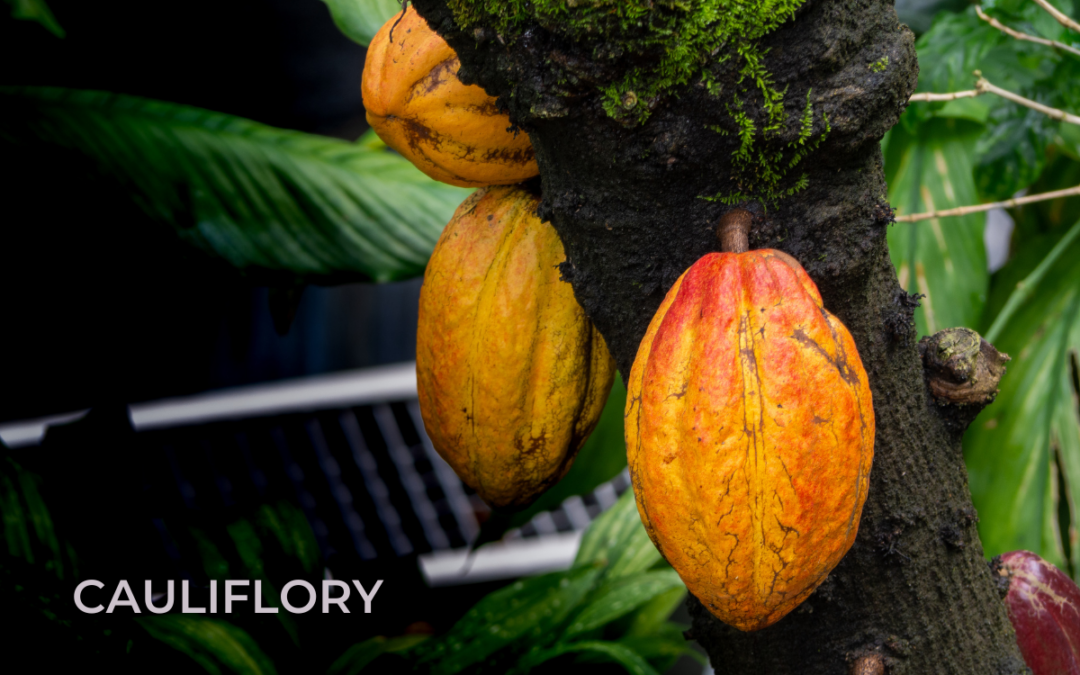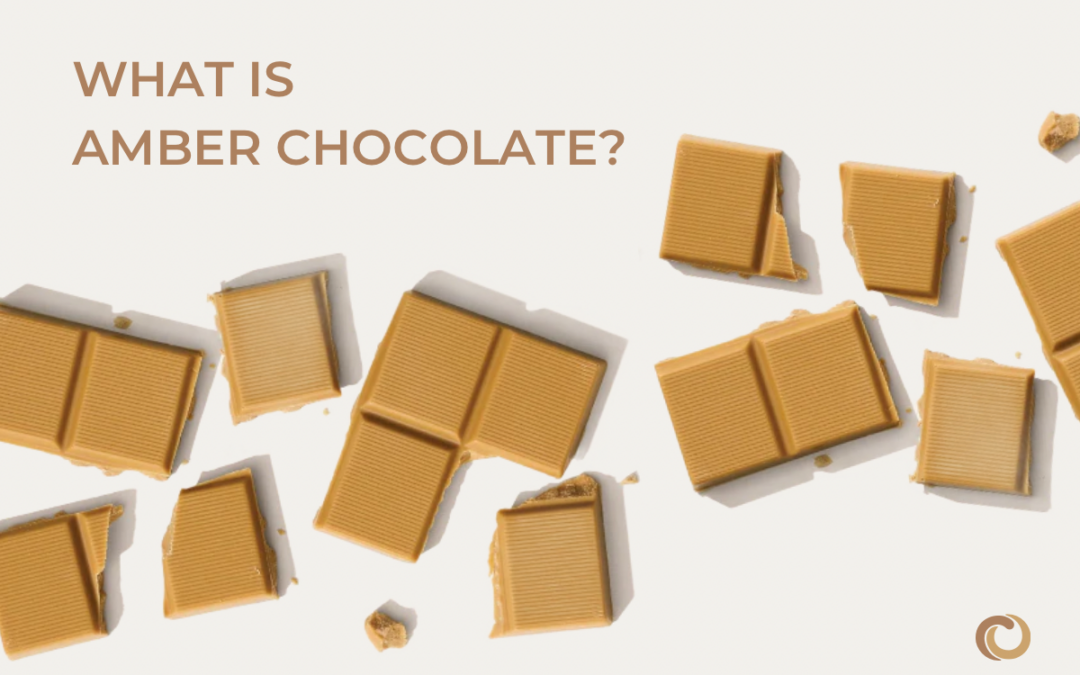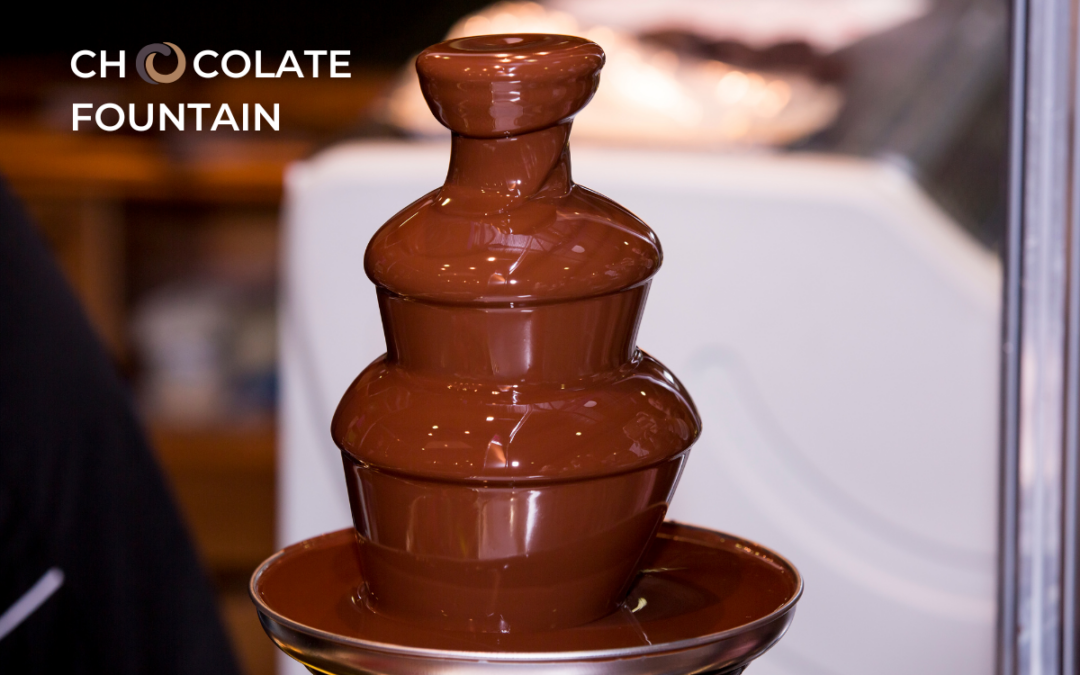How long does it take to grow a cacao tree? Well, It depends on the climate, soil quality, and most important time. Growing a cacao tree is a long process and requires a lot of time, patience, and attention. If you want ready-to-use cocoa beans in your hands after just a few months to make your own home-grown chocolate, we’ll tell you now, you’re going to be disappointed!
Making chocolate involves a lot of work, and it all begins with growing cocoa pods. Let’s take an in-depth look at what goes into the process.
What is cacao?
Cacao pods are a tropical fruit that comes from the cacao tree. Its scientific name is Theobroma Cacao, which translates as “food of the gods”.
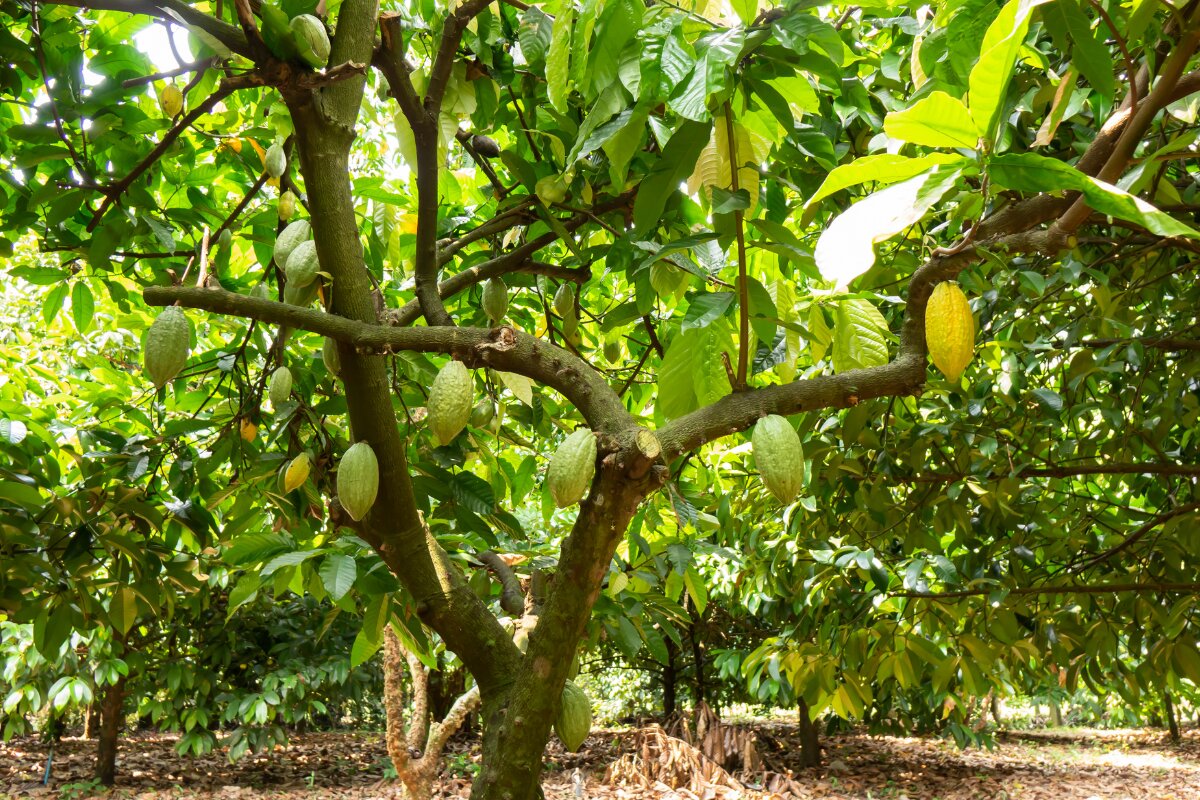
Cacao tree
The cacao tree has the following characteristics:
- It has a height of 15-25 feet.
- Its fruits are large, elongated pods, containing 30 to 40 seeds. The pods come in a variety of colors, from yellow to purple to reddish-brown, and are covered with a sweet and edible white pulp.
- Its natural habitat is tropical humid forests with a warm climate both day and night.
- It takes between 5-6 years to give its first fruits. The fruit takes 5-6 months to mature and become ready for harvest.
Cacao trees first flower when they are four to six years old and about five feet tall. The trees are very delicate which means they need to be grown in optimal conditions during this time. Once the trees are mature, it then takes five to six months for the cacao pods to ripen from the pollinated flowers. Cocoa farmers expect two harvests a year: a main harvest and a secondary harvest with lower yields.
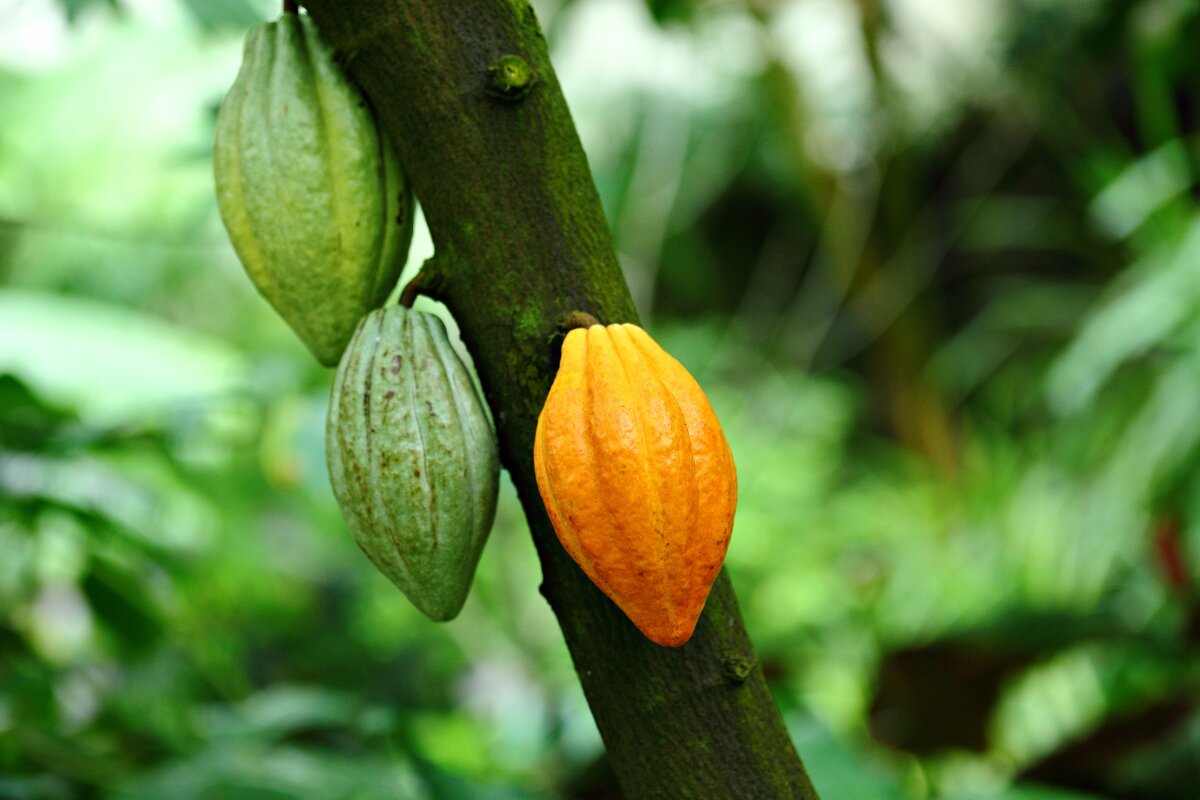
Where do cacao trees grow most?
Cacao trees need a hot and humid climate to flourish. They evolved in the Amazonian forests as an under-story crop, so they like to be under taller forest trees or other crops where there is shelter from direct sunlight.
Almost all cacao production takes place in the tropical regions around the equator, with West African countries providing most of the world’s cocoa beans. Ivory Coast and Ghana provide more than 50% of the world’s cocoa production. The rest of the world’s cocoa is produced by countries such as Brazil, Peru, Ecuador, Bolivia, Mexico, Indonesia, Cameroon, and Nigeria, which boast similarly suitable climates for growing cacao.
The eight main cocoa-producing countries are:
- Ivory Coast 38%
- Ghana 19%
- Indonesia 13%
- Nigeria 5%
- Brazil 5%
- Cameroon 5%
- Ecuador 4%
- Malaysia 1%
Type of cacao trees
According to conventional wisdom, there are three major varieties of cacao: Forastero, the robust and most widely grown; Criollo, the higher quality but more expensive variety; and Trinitario, a hybrid of the other two. In reality, genetic analysis shows that there are more than 10 different varieties.
Growing cacao trees takes time and patience. Cacao trees are notoriously difficult to grow, even when they reach maturity. There’s no guarantee that they will produce fine-flavored cacao, so it’s important to realize where your chocolate comes from and the effort that it takes to produce it. Hopefully, you can better appreciate and respect your favorite chocolate. Next time you reach for a piece of chocolate, take a moment to think about how long it took before becoming a bar.
If you have any questions or comments, we would love to hear from you! We are @cocoterra_co on Instagram and Pinterest and @cocoterraco on Twitter and Facebook. Don’t forget to tag us when you show off your creations.

